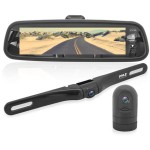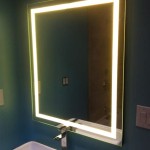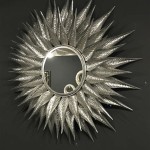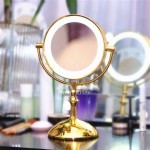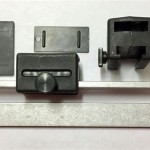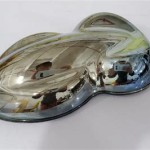How To Put A Mirror On Plasterboard Wall
Mounting a mirror on a plasterboard wall requires careful planning and execution to ensure both safety and stability. The weight of the mirror and its location dictate the appropriate fixing method.
Assessing the Wall and Mirror: Before commencing, it's crucial to assess both the plasterboard and the mirror. Determine the mirror's weight and dimensions. Examine the plasterboard for any existing damage or weaknesses. Identify the location of wall studs using a stud finder. Studs provide the most secure anchoring points.
Choosing the Right Fixing Method: Several methods are suitable for fixing mirrors to plasterboard. Lightweight mirrors can often be hung using specialized adhesive products. Heavier mirrors necessitate more robust solutions, such as heavy-duty mirror fixings, toggle bolts, or mounting to wall studs directly.
Using Adhesive for Lightweight Mirrors: Mirror adhesives offer a straightforward method for lighter mirrors. Ensure the wall surface is clean and dry. Apply the adhesive according to the manufacturer's instructions, usually in vertical lines or dots on the back of the mirror. Carefully position the mirror against the wall, applying even pressure. Additional support, such as masking tape, might be necessary while the adhesive cures.
Utilizing Heavy-Duty Mirror Fixings: Specifically designed for mirrors, these fixings often combine mechanical fixings with adhesive. They offer increased support and are suitable for medium-weight mirrors. Drill pilot holes in the plasterboard at the designated fixing points. Insert the provided wall plugs, then screw the fixings into the wall, leaving a small gap for the mirror to slot onto. Carefully position the mirror onto the fixings. These fixings often include covers to conceal the screws.
Employing Toggle Bolts for Heavier Mirrors: Toggle bolts are a reliable solution for heavier mirrors where stud placement isn't ideal. Drill a hole slightly larger than the toggle bolt's folded wings. Insert the toggle bolt through the fixing hole in the mirror's backing and into the drilled hole in the wall. Ensure the wings spring open behind the plasterboard. Tighten the bolt until the mirror is securely fastened to the wall.
Mounting Directly to Wall Studs: Whenever possible, mounting directly to wall studs offers the most secure solution, especially for heavier mirrors. Locate the studs using a stud finder. Use screws specifically designed for wood, ensuring they are long enough to penetrate the stud sufficiently. Pre-drill pilot holes through the mirror's backing and into the studs. Carefully screw the mirror into the studs, ensuring it remains level.
Necessary Tools and Materials: Assemble the necessary tools and materials before beginning the installation process. This typically includes a measuring tape, pencil, spirit level, drill with appropriate drill bits, screwdriver, wall plugs (if required), screws, the chosen fixing method (adhesive, heavy-duty fixings, toggle bolts), safety glasses, and potentially a stud finder.
Preparing the Wall Surface: Proper wall preparation is essential for a successful installation. Clean the wall surface with a damp cloth to remove any dust or debris. Allow the surface to dry completely before proceeding. For uneven surfaces, consider using shims to ensure a flush finish.
Marking the Mirror Position: Accurate marking prevents misalignment. Use a pencil and measuring tape to mark the desired position of the mirror on the wall. Use a spirit level to ensure the markings are both horizontal and vertical. Double-check the measurements before proceeding with the installation.
Safety Precautions: Always prioritize safety when working with tools and mounting heavy objects. Wear appropriate safety glasses to protect eyes from dust and debris. Ensure adequate lighting in the work area. If working with a particularly large or heavy mirror, enlist assistance to prevent accidents and ensure proper handling.
Handling Large or Heavy Mirrors: Large or heavy mirrors require extra care during handling and installation. Enlist assistance to lift and position the mirror safely. Consider using suction cups designed for handling glass to provide better grip and control. Support the mirror adequately while positioning and fixing it to the wall.
Considering the Room's Environment: The environment of the room can influence the choice of fixing method. High-humidity environments, such as bathrooms, might require specialized adhesives or fixings resistant to moisture. Consider temperature fluctuations as well, as they can affect adhesive performance over time.
Dealing with Uneven Walls: Older properties often feature uneven walls. Addressing this unevenness is crucial for a flush and stable mirror installation. Use shims behind the mirror to compensate for minor imperfections. For significant unevenness, consider using a thicker backing board for the mirror to create a more level mounting surface.

Hanging Heavy Mirror On Plaster Walls 6 Steps With Pictures Instructables
How To Hang A 100 Pound Mirror On Drywall Quora

How To Hang A Large Or Heavy Mirror

Hang A Mirror On Plasterboard Wall Soraya Interiors

Buy Gripit Plasterboard Wall Fixings Hang Mirrors Up To 74kgs

How To Hang A Mirror On Plaster Wall With Geefix

Fixing A Mirror To Plasterboard Wall General Construction Issues Buildhub Org

Gripit How To Hang A Mirror Onto Plasterboard Wall

How To Hang A Very Heavy Picture Or Mirror The Best

How To Hang A Heavy Mirror


